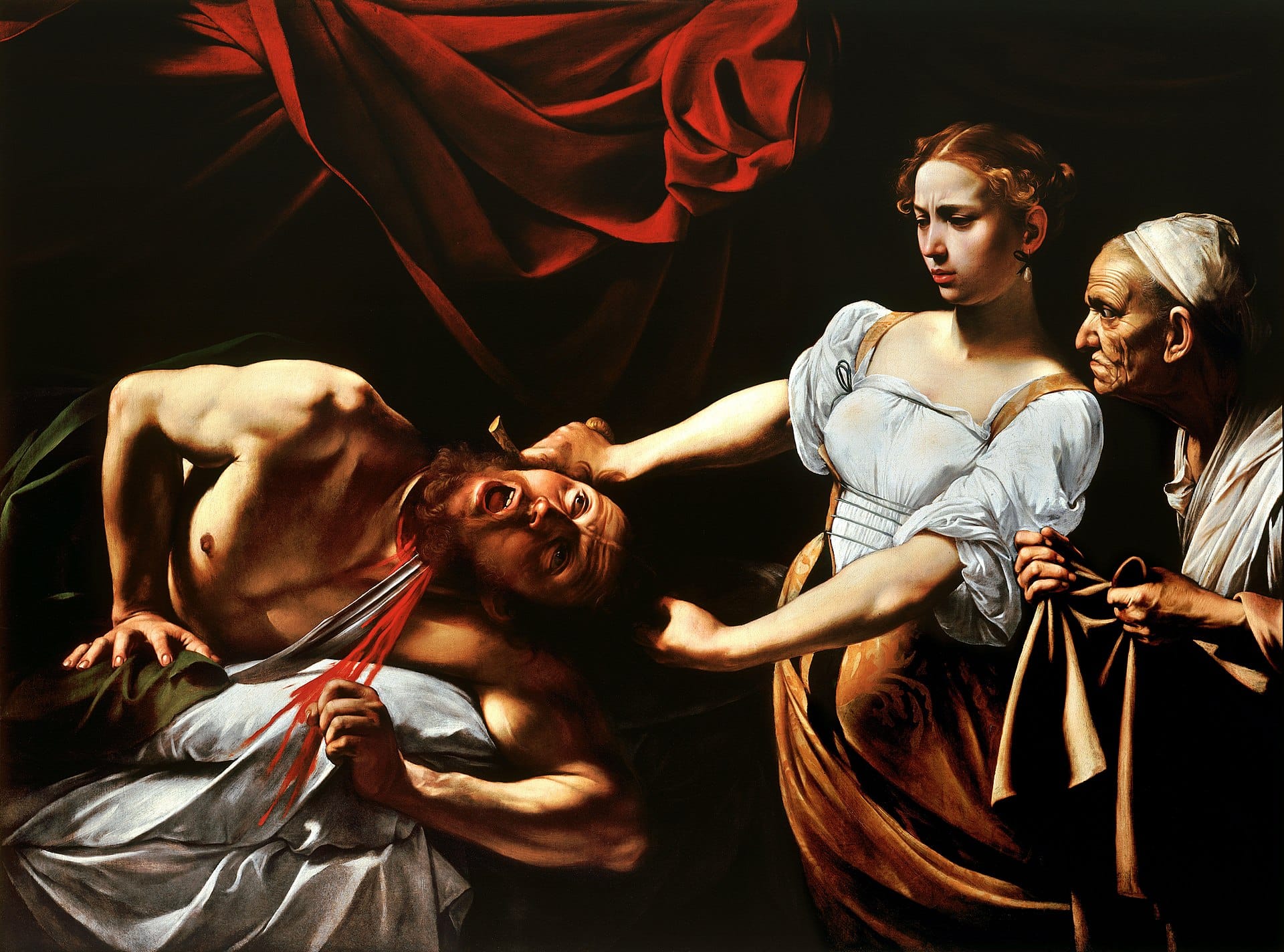Caravaggio's 'Judith Beheading Holofernes'

Caravaggio painted the infamous picture shown below in 1598. The following year a Roman noblewoman Beatrice Cenci was executed for her part in a lurid murder of her father, who reportedly had raped her repeatedly. Beheading was a common form of execution at the time and this painting got everyone's attention - it was much copied.

For other Caravaggios, see here, here and here. Such paintings provoked art critic John Ruskin to declare that Caravaggio was fed "upon horror and ugliness and filthiness of sin." Indeed.
As for Beatrice Cenci, who is shown up top, most Romans (and poets ever since) sympathized with her against an abusive father. Were these revenge paintings and poems? The English poet Shelley apparently saw the painting in Rome in 1818, which led to his verse drama about her (published in 1819). Alexandre Dumas, Stendhal, Nathaniel Hawthorne (The Marble Fawn) and Antonin Artaud all tried their hand at the story. It resonated because Beatrice represented the people, destroyed by an abusive and greedy aristocracy.
